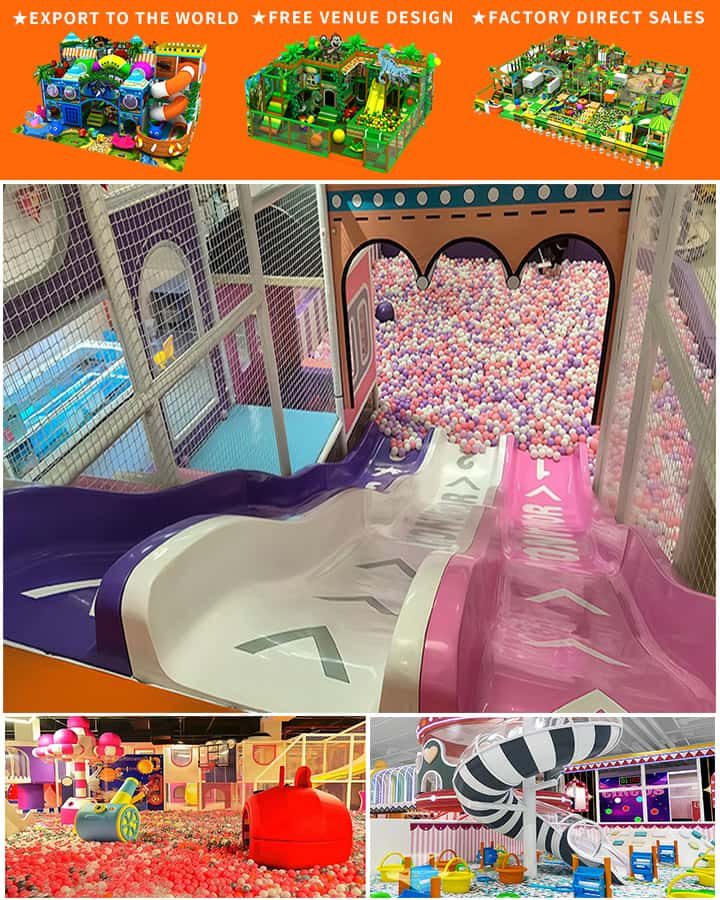Designing indoor play equipment for kids is both an art and a science. It requires a thoughtful balance between creativity, safety, and functionality. As our understanding of child development continues to evolve, so do the designs of the play structures that fill our homes, schools, and recreational centers. Here’s a deep dive into the innovative trends and considerations in designing indoor play equipment for children.
Safety First
Safety is paramount when it comes to indoor play equipment. Designers must ensure that all elements are non-toxic, free from sharp edges, and constructed with sturdy materials. Structural stability is crucial; the equipment must withstand the enthusiastic rigors of play without wobbling or tipping over. Features like soft landing surfaces, padded corners, and rounded edges help mitigate the risk of injury. Additionally, age-appropriate height and complexity ensure that children of various ages can enjoy the equipment safely.
Encouraging Physical Activity
Modern play equipment isn’t just about fun—it also promotes physical activity. Climbing walls, balance beams, and obstacle courses challenge kids’ motor skills and encourage physical fitness. These activities support the development of coordination, strength, and flexibility. Interactive elements like built-in games and sensory activities further engage children, making exercise feel like play rather than a chore.
Stimulating Cognitive Development

Play is a critical component of cognitive development. Well-designed indoor play equipment should stimulate young minds and encourage learning through exploration. Incorporating puzzles, gears, levers, and other interactive features challenges children to think critically and solve problems. Educational panels, alphabet blocks, and counting beads can make learning enjoyable and seamlessly integrated into playtime.
Fostering Social Skills
Play equipment also serves as a platform for social interaction. Designing spaces where multiple children can play simultaneously fosters teamwork, communication, and social bonding. Cooperative play structures such as seesaws, merry-go-rounds, and group climbing frames allow kids to learn sharing, empathy, and conflict resolution skills in a supportive environment.
Versatility and Adaptability
Kids grow quickly, and their interests change even faster. Modular designs in indoor play equipment offer versatility, allowing pieces to be rearranged or added onto, extending the life and utility of the equipment. Convertible structures that can switch from slides to climbing frames or from tunnels to ball pits provide variety and keep children engaged over time.
Aesthetic Integration
While safety and functionality are essential, aesthetics shouldn’t be overlooked. Bright colors, whimsical shapes, and imaginative themes capture children’s attention and make play areas more inviting. Seamless integration of design elements creates a cohesive look that complements the surrounding space while igniting a sense of wonder and creativity in young minds.
Sustainable Materials
Sustainability is increasingly important in all aspects of design, including children’s play equipment. Using eco-friendly materials reduces environmental impact and sets a positive example for future generations. Non-toxic, recyclable plastics, sustainably sourced wood, and natural fiber fabrics are popular choices among conscious designers and parents alike.
Accessibility for All Children
Inclusivity is a vital aspect of modern play equipment design. Ensuring that children of all abilities can enjoy playtime involves creating adaptable and accessible structures. Ramps, transfer stations, and adjustable height features accommodate children with mobility challenges, ensuring they experience the joy of play alongside their peers.
Conclusion
The world of kids’ indoor play equipment design is dynamic and continually evolving, driven by advancements in technology, research in child development, and an increased awareness of sustainability and inclusivity. By prioritizing safety, physical activity, cognitive development, social skills, versatility, aesthetic appeal, sustainability, and accessibility, designers can create enriching environments that nurture and inspire the next generation. The ultimate goal is to craft spaces where children can explore, learn, and grow—one innovative piece of play equipment at a time.




